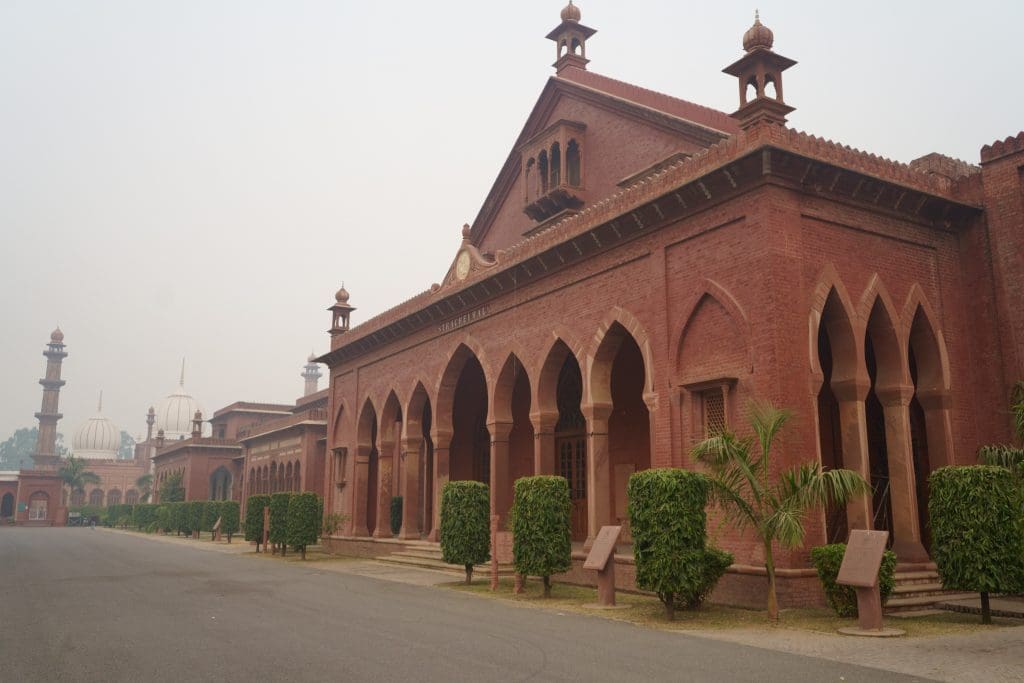
On Tuesday, The Supreme Court began its hearing on a petition concerning the minority status of Aligarh Muslim University (AMU).
The apex court observed that an educational institute is not barred from enjoying minority status merely because it is regulated by a statute.
“Aligarh Muslim University is not and cannot be a University of any particular religion or religious denomination as any University which is declared by the Constitution of India to be of national importance should, by definition, cannot be a minority institution,” Solicitor General Tushar Mehta said in his written submissions to the top court.
A Constitution Bench of Chief Justice of India (CJI) DY Chandrachud and Justices Sanjiv Khanna, Surya Kant, JB Pardiwala, Dipankar Datta, Manoj Misra, and Satish Chandra Sharma added that under Article 30, (right of minorities to establish and administer educational institutions) of the Constitution, there need not be absolute administration by a minority group to claim an institution’s character.
Chief Justice of India (CJI) DY Chandrachud stated, “Article 30 doesn’t necessitate absolute administration by the minority, especially in a regulated society where statutes govern various aspects of our lives. He emphasized that being regulated by a statute doesn’t negate the minority status.
“Even when regulated by a statute, the right of administration doesn’t preclude an institution from enjoying minority status.
The Chief Justice highlighted that exclusive administration for religious courses is not a requirement; instead, institutions can admit students from all communities, not limited to only one.
Advocate Rajiv Dhavan appearing for the AMU Minority status highlighted the internal contradictions in the judgement of Aziz Basha Case on the reasoning of facts and law.
Dhavan put forth four issues arising out of the “contradictions Azeez Basha may have”, which are as follows:
1. Was Azeez Basha correctly decided?
2. What is the effect of the National Commission of Institutions Act read with UGC? Should Basha be reconsidered in the light of NCMI and read with UGC and Yashpal?
3. Was Azeez Basha correct in accepting the antecedents’ historical data on AMU’s Minority and Muslim character but denying its constitutional significance while deciding the issue of minority status?
4. Is Azeez Basha contrary to the constitutional dispensation?
“India has a diversity which is more than any continent across the world. Even if you come to my land, Uttar Pradesh you will see the variation, this is what we seek to preserve. Till 2005 and even in Azeez Basha, they (Central government) had defended the statute. But now there is a regime change and hence a change in a stand. Union of India’s stand now is in defiance of the stand of Parliament in 1981. It is duty bound to follow the will of Parliament as taken in 1981”, Dhawan emphasised.
Adv. Dhawan also argued that there is no dispute that AMU is a minority institution, substantiating it with the presence of a mosque on campus and appointments of Muslims for higher positions.
He further mentioned that if Azeez Basha’s case is to be considered no university can be a minority as all deemed University needs statutory character.
Dhavan also maintained that students of all religions can apply and be admitted to AMU.
“This protection is needed to prevent discrimination against the minority. The state has no right to compel minority education institutions to give up their character at all,” Dhawan said.
AMU obtained its legal status in 1920 through the AMU Act (1920).
It was only after 1950, that various amendments were made to its AMU Act, with a notable one occurring in 1981 through the AMU Amendment Act.
The context for this 1981 amendment can be better understood by referring to a significant Supreme Court ruling in the Azeez Basha case of 1967, involving a five-judge bench.
The Azeez Basha Case (1967)
As per the Basha case, the court said, “AMU was neither established nor administered by the Muslim minority”, implying that the constitutional protection granted to minority institutions under Article 30 in India doesn’t extend to the university.
In simpler terms, the university is considered ineligible for the special rights provided to minority institutions by Article 30.
In 1981, changes were made to the 1920 AMU Act, specifying that the term ‘University’ refers to an “educational institution of their choice established by the Muslims of India, which originated as the Mohammedan Anglo-Oriental College, Aligarh”.
The amendment clarified what ‘University’ means in the Act and empowered AMU to foster the educational and cultural progress of Indian Muslims.
As per the legislative process, after the amendments are made to any Act, it is disposed of or removed from the book of law by repealing the Amendment Act.
But that didn’t happen in the AMU Minority status case. The Amendment Act was repealed in 1988 and two sections of the 1981 Amendment Act that did not relate to minority status were left out of the 1988 repeal for “unknown reasons”.
In 2005, after the 1981 Amendment Act, the Allahabad High Court again declared that AMU is not a minority institution within Article 30 and the 1981 Amendment was declared invalid. This issue came up in the Supreme Court in 2006.
In February 2019, the Supreme Court stated that the accuracy of the Azeez Basha case remains undetermined.
The court forwarded the matter to a seven-judge bench to determine the validity of the Azeez Basha judgement.
Consequently, as of now, the AMU’s minority status is pending in the Supreme Court awaiting the broader concerns of India’s minorities.



